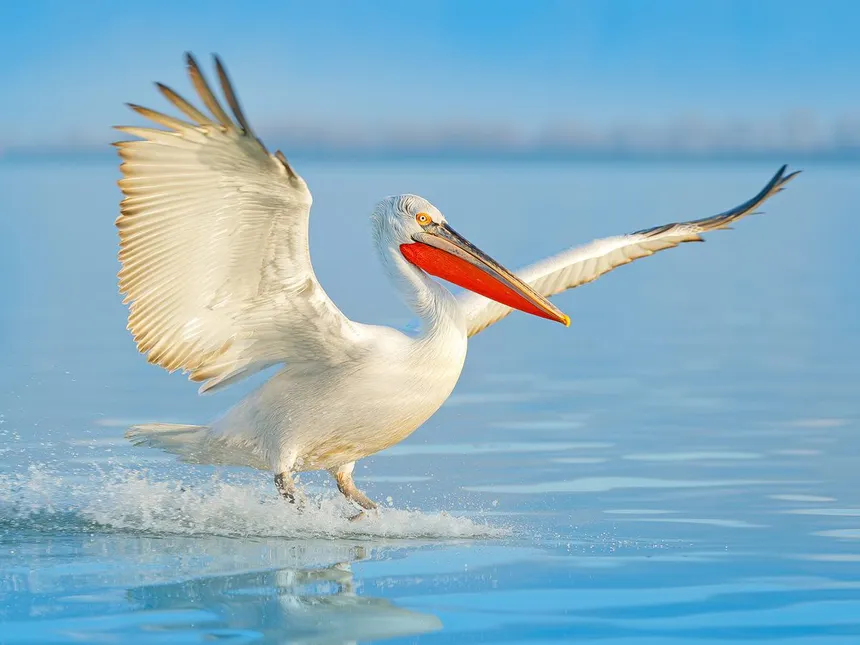“Can Pelicans Fly? Amazing Facts About These Giant Gliders”

Pelicans, with their massive wingspans and distinctive throat pouches, might not seem like natural fliers at first glance. Yet these seemingly awkward birds are not only capable of flight—they’re extraordinary fliers, gliding over oceans and soaring through skies with remarkable grace. Found on every continent except Antarctica, pelicans are water birds adapted for both aquatic hunting and aerial efficiency.
Let’s explore how and why pelicans fly, and what makes their flight so special.
Yes—Pelicans Can Absolutely Fly
Despite their bulky bodies and long beaks, pelicans are strong and efficient fliers. They are capable of flying hundreds of kilometers during migration or in search of food. Some species have been recorded flying at altitudes of over 3,000 meters (10,000 feet).
How Do Pelicans Fly So Well?
- Massive Wingspans:
Most pelican species have wingspans between 2.3 to 3.6 meters (7.5 to 11.8 feet). Their long, broad wings provide lift with minimal energy use, ideal for gliding and soaring. - Air Currents and Thermals:
Pelicans take advantage of thermals (rising columns of warm air) and updrafts from waves or cliffs. This allows them to glide for long periods with little flapping, conserving energy. - Flying in Formation:
Like geese, pelicans often fly in V-shaped formations, reducing wind resistance and helping the flock travel more efficiently over long distances.

Flight Patterns of Different Pelican Species
- Brown Pelicans:
Often seen flying low over ocean waves in tight formation. They use ground effect—a cushion of air between their wings and the surface—to glide just above the water. - American White Pelicans:
Known for migrating long distances. They soar high using thermals and can travel across entire regions during seasonal movements. - Dalmatian Pelicans:
Among the largest flying birds, they demonstrate the power of large-winged soaring, often cruising over lakes and wetlands in Europe and Asia.
Why Do Pelicans Fly?
- Foraging:
Pelicans often fly to locate fish-rich bodies of water, sometimes traveling 50–100 km in a single day. - Migration:
Several species are migratory. For example, the American white pelican migrates between Canada and Central America. - Nesting:
During breeding seasons, pelicans fly to colonial nesting sites, often located on remote islands or protected wetlands.
Can Pelicans Take Off from the Water Easily?
Yes, but it takes effort. Pelicans run along the water’s surface while flapping their wings vigorously to gain the lift needed for takeoff. Once airborne, their flight becomes smooth and efficient.

Conclusion: Majestic Masters of the Sky and Sea
So, can pelicans fly? Not only can they fly—they do so with surprising elegance and power, mastering both the art of soaring through the air and gliding just above the waves. Their aerial skills help them survive, thrive, and travel across great distances, making them one of the most fascinating fliers in the bird world.



